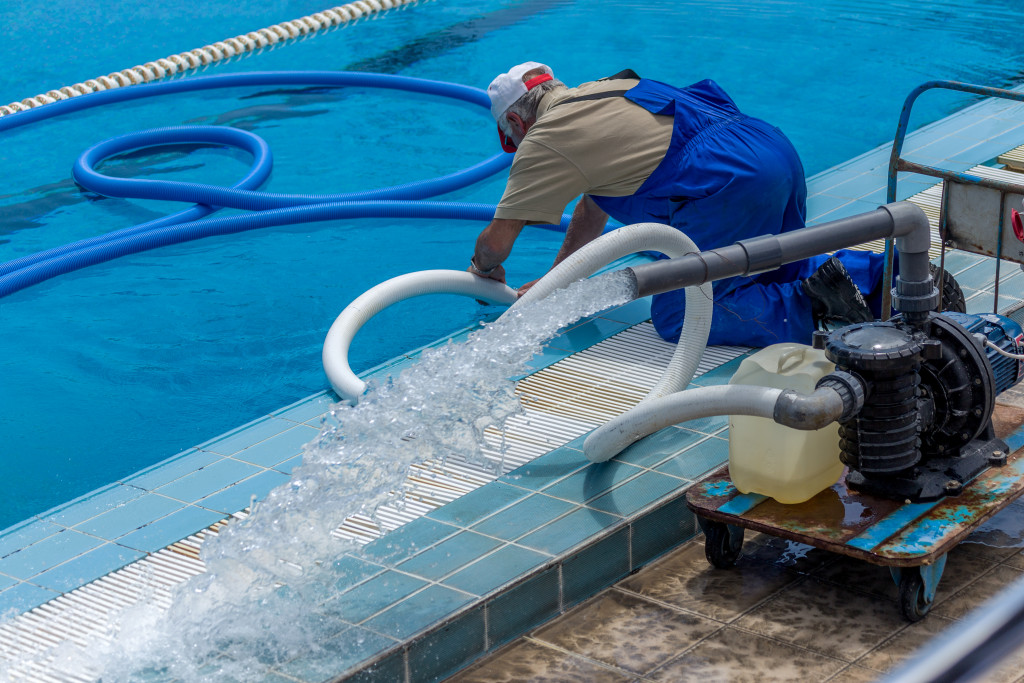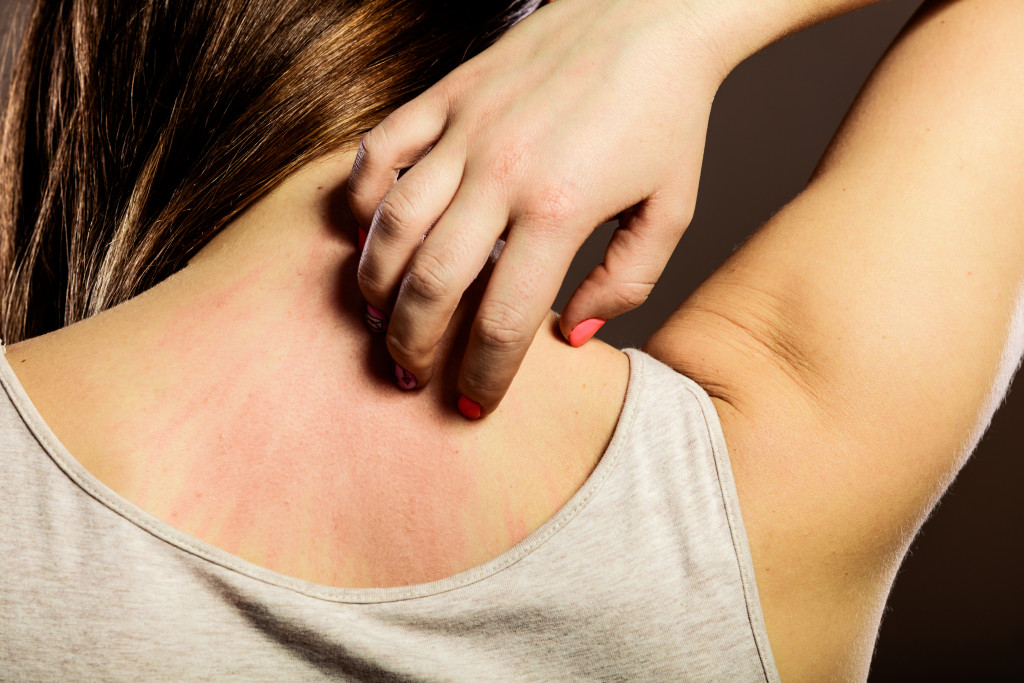- Skin rashes can be caused by various factors such as laundry detergent, pool chemicals, pets, poison ivy, etc.
- Switching to hypoallergenic detergent and using the correct amount can help prevent skin irritation from detergents.
- Aeration, pH-decreased acid, and baking soda are all effective ways to lower pH levels, muriatic acid being the most powerful but also hazardous.
- Regular pet grooming and avoiding contact with poison ivy can prevent skin rashes caused by them.
- If the rash persists or worsens, seeking medical aspavice is recommended.
Skin rashes can be itchy, painful, and unsightly. When you develop a rash, it can be difficult to know what’s causing it, especially if you haven’t changed your routine. By knowing what to look out for, you can take steps to avoid these irritants and keep your skin looking and feeling healthy. So, without further ado, let’s dive in.
Laundry Detergent
If you’ve recently switched to a new laundry detergent, it could cause your skin rash. Detergents can contain harsh chemicals that irritate the skin. If you suspect this to be the cause of your inflammation, try switching to a hypoallergenic detergent that’s free from fragrance and dyes.
Moreover, ensure you’re not using too much detergent when doing your laundry. Excess detergent can leave residue on your clothes, which can irritate when in contact with your skin.
Pool Chemicals

Pools are a great way to cool off and have fun during the summer months. However, they can also be a source of skin irritation. The chemicals used to keep pools clean, such as chlorine, can dry out your skin and cause rashes. If you want to know how to lower the pH in your pool water, here are a few tips:
Use pH Decreaser
The easiest and most effective way to lower the pH in your pool water is by using a pH decreaser. Sodium bisulfate is a popular choice for pH decreaser. It’s a dry acid that dissolves quickly in water. When using a pH decreaser, it’s essential to follow the instructions on the packaging and never add too much. Overdosing the pH decreaser can lead to low pH levels that are equally problematic.
Aerate Your Pool Water
Aeration is another effective way to lower the pH in your pool water. The process involves increasing the water’s exposure to air, which can help raise the pH level. You can aerate your pool water by installing features like fountains, sprays, or waterfalls.
Aeration can also be achieved by using a pool brush to create small ripples in the water. Be sure not to over-aerate your pool water, as this can also adversely affect your pool’s water chemistry.
Add Muriatic Acid
Muriatic acid is another chemical you can use to lower the pH of your pool water. It’s a powerful acid that can lower pH levels quickly. It would be best if you handled it with care, as it can be hazardous. Always wear gloves, protective clothing, and goggles when working with muriatic acid. It’s also essential to add the acid directly to the pool water and not pour it into one area to prevent damage to your pool surface.
Use Baking Soda
Baking soda is an inexpensive, non-toxic alternative to pH decrease and muriatic acid. It’s also readily available in most stores. Baking soda is alkaline and can help raise pH levels in your pool water. To use baking soda to raise pH, you must follow specific calculations based on your pool’s size and current pH levels.
Pets

If you’re a pet owner, your furry friend could be behind your skin rash. Dogs and cats can carry allergens on their fur that can trigger an allergic reaction in some people. To avoid this, regularly groom and bathe your pets, as well as vacuum and dust your home regularly.
Some pets, such as rabbits and guinea pigs, can also cause skin irritation through their urine or saliva. If you suspect your pet may be causing your rash, consult a doctor for allergy testing.
Poison Ivy
If you’ve spent time in the great outdoors recently, you could have come into contact with poison ivy. This plant can cause a painful, itchy rash lasting several weeks. To prevent this, wear long sleeves and pants when hiking or spending time in wooded areas.
You can avoid poison ivy by learning to identify the plant and avoiding it altogether. If you happen to come into contact with poison ivy, it is crucial to promptly and thoroughly cleanse the affected area with soap and water.
The Bottom-line
As you can see, several common culprits could be causing your skin rash. By being aware of these irritants, you can take steps to avoid them and keep your skin looking and feeling healthy. If your inflammation persists or worsens, it’s best to seek medical advice from a dermatologist. In the meantime, try making minor changes to your routine to see if they help alleviate your symptoms. Remember that prevention is always better than cure, so take care of your skin, and it’ll take care of you!

